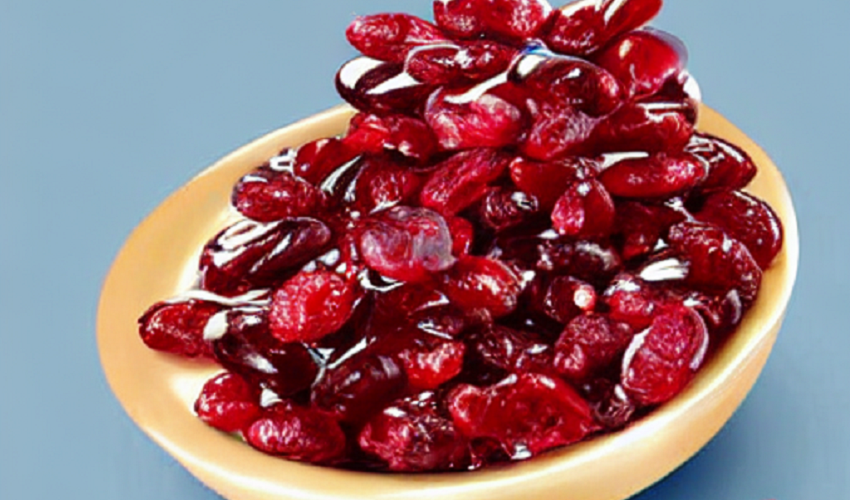What is diabetes?
Diabetes is a chronic medical condition characterized by high blood sugar levels. It occurs when the body is unable to properly regulate insulin, a hormone that helps control blood sugar. There are several types of diabetes, including type 1, type 2, and gestational diabetes. Type 1 diabetes is an autoimmune disease in which the immune system mistakenly attacks and destroys the insulin-producing cells in the pancreas. Type 2 diabetes is the most common form and is often associated with lifestyle factors such as obesity and physical inactivity. Gestational diabetes occurs during pregnancy and usually resolves after giving birth. Diabetes can lead to various complications if not properly managed, including heart disease, stroke, kidney disease, and nerve damage. It is important for individuals with diabetes to monitor their blood sugar levels, eat a balanced diet, engage in regular physical activity, and take prescribed medications to maintain optimal health.
Importance of diet for diabetes management
Diet plays a crucial role in managing diabetes. It is important for individuals with diabetes to maintain a healthy and balanced diet to control their blood sugar levels. Making the right food choices can help prevent complications and improve overall health. When it comes to choosing grains, millets are a great option for individuals with diabetes. Millets are low in glycemic index, which means they have a minimal impact on blood sugar levels. Additionally, millets are rich in fiber, which aids in digestion and helps regulate blood sugar levels. They are also packed with essential nutrients like vitamins, minerals, and antioxidants, which are beneficial for overall health. Incorporating millets into the diet can provide a nutritious and delicious alternative to other grains, making it a good choice for individuals with diabetes.
Role of millets in diabetes management
Millet is a versatile grain that has gained popularity in recent years, especially among individuals with diabetes. The role of millets in diabetes management is significant due to their low glycemic index and high fiber content. Millets help regulate blood sugar levels and improve insulin sensitivity, making them an excellent choice for individuals with diabetes. Additionally, millets are rich in essential nutrients like magnesium, which has been shown to reduce the risk of developing type 2 diabetes. Incorporating millets into the diet can aid in weight management and promote overall health for individuals with diabetes.
Types of Millets
Pearl Millet
Pearl millet, also known as bajra, is a nutritious grain that is highly beneficial for individuals with diabetes. It has a low glycemic index, which means it does not cause a rapid increase in blood sugar levels. Pearl millet is rich in fiber, which helps in regulating blood sugar levels and improving insulin sensitivity. Additionally, it contains essential minerals such as magnesium, which plays a crucial role in carbohydrate metabolism. Including pearl millet in the diet of individuals with diabetes can help in managing blood sugar levels and promoting overall health.
Finger Millet
Finger millet, also known as ragi, is a highly nutritious grain that is good for diabetes. It has a low glycemic index, which means it does not cause a rapid increase in blood sugar levels. Finger millet is rich in fiber, which helps in maintaining blood sugar levels and preventing sudden spikes. It is also a good source of essential nutrients like calcium, iron, and vitamin D. Including finger millet in the diet can help manage diabetes and improve overall health.
Foxtail Millet
Foxtail millet is a highly nutritious grain that is beneficial for individuals with diabetes. It has a low glycemic index, which means it does not cause a rapid increase in blood sugar levels. This makes it an ideal choice for managing blood sugar levels in people with diabetes. Additionally, foxtail millet is rich in dietary fiber, which helps in regulating blood sugar levels and promoting better digestion. It is also a good source of essential nutrients like iron, magnesium, and phosphorus. Including foxtail millet in the diet can contribute to overall health and well-being for individuals with diabetes.
Nutritional Benefits of Millets
High in fiber
Fiber plays a crucial role in managing blood sugar levels by slowing down the absorption of glucose in the body. Millet is a great choice for individuals with diabetes as it is high in fiber. This helps prevent sudden spikes in blood sugar and promotes better glycemic control. Additionally, the high fiber content in millet aids in digestion, promotes a feeling of fullness, and can contribute to weight management. Including millet in your diet can be a beneficial addition to a diabetic meal plan.
Low glycemic index
Millet is a great option for individuals with diabetes due to its low glycemic index. The glycemic index measures how quickly a food raises blood sugar levels. Foods with a low glycemic index release glucose slowly into the bloodstream, preventing spikes in blood sugar. Millet has a glycemic index of around 50, making it a suitable choice for managing blood sugar levels. Additionally, millet is rich in fiber, which aids in digestion and helps regulate blood sugar levels. Including millet in the diet can provide a steady release of energy and contribute to better diabetes management.
Rich in essential nutrients
It is particularly beneficial for individuals with diabetes due to its low glycemic index. Millet is a good source of fiber, which helps regulate blood sugar levels and promote healthy digestion. Additionally, it is packed with vitamins and minerals, including magnesium, which is known to improve insulin sensitivity. Millet also contains antioxidants, such as phenolic compounds, that can help reduce inflammation and protect against chronic diseases. Overall, incorporating millet into a diabetes-friendly diet can provide numerous health benefits and contribute to better blood sugar management.
Effect of Millets on Blood Sugar Levels
Regulation of blood sugar levels
Millet is a highly beneficial grain for individuals with diabetes due to its ability to regulate blood sugar levels. The low glycemic index of millet ensures that it is slowly digested and absorbed, preventing rapid spikes in blood sugar levels. Additionally, millet is rich in fiber, which further aids in blood sugar regulation by slowing down the absorption of glucose into the bloodstream. Regular consumption of millet can help individuals with diabetes maintain stable blood sugar levels and reduce the risk of complications associated with the condition.
Improvement in insulin sensitivity
Improvement in insulin sensitivity is a crucial factor in managing diabetes. Studies have shown that incorporating millets into the diet can lead to a significant improvement in insulin sensitivity. Millets are rich in fiber, which helps regulate blood sugar levels and improve insulin function. Additionally, millets have a low glycemic index, which means they cause a slower and more gradual rise in blood sugar levels. This can help prevent spikes in blood sugar and promote better insulin control. Including millets in the diet can be a beneficial dietary strategy for individuals with diabetes looking to improve their insulin sensitivity and manage their blood sugar levels effectively.
Reduced risk of diabetes complications
Millet is a nutritious grain that has been found to have several health benefits, including a reduced risk of diabetes complications. Studies have shown that consuming millet can help regulate blood sugar levels, improve insulin sensitivity, and lower the risk of developing complications associated with diabetes, such as heart disease and kidney damage. The high fiber content in millet also aids in digestion and promotes a feeling of fullness, which can help with weight management, another important aspect of diabetes management. Additionally, millet is rich in essential nutrients like magnesium, which plays a crucial role in glucose metabolism. Including millet in a balanced diet can be a beneficial choice for individuals with diabetes, as it offers a range of health benefits and can contribute to better blood sugar control and overall well-being.
Choosing the Right Millet for Diabetes
Consideration of personal preferences
When considering which millet is good for diabetes, it is important to take into account personal preferences. Different types of millet have their own unique flavors and textures, so it is essential to choose one that suits individual tastes. Some people may prefer the nutty taste of pearl millet, while others may enjoy the mild flavor of finger millet. Additionally, considering the cooking methods and versatility of the millet can also play a role in the decision-making process. Ultimately, selecting a millet that aligns with personal preferences can make the dietary adjustments for diabetes more enjoyable and sustainable.
Consultation with a healthcare professional
When it comes to managing diabetes, it is always important to consult with a healthcare professional. They have the knowledge and expertise to provide personalized advice and guidance based on your specific condition. When considering which millet is good for diabetes, it is essential to seek their opinion. They can assess your dietary needs, evaluate the nutritional value of different types of millet, and recommend the most suitable options for you. By consulting with a healthcare professional, you can ensure that your diet is tailored to your individual needs and that you are making informed choices for your diabetes management.
Understanding the glycemic index
The glycemic index is a measure of how quickly a food raises blood sugar levels. Understanding the glycemic index can be helpful for individuals with diabetes as it can guide them in making food choices that have a minimal impact on their blood sugar levels. Foods with a low glycemic index are digested and absorbed more slowly, resulting in a slower and more gradual rise in blood sugar levels. On the other hand, foods with a high glycemic index are digested and absorbed quickly, leading to a rapid increase in blood sugar levels. By choosing foods with a low glycemic index, individuals with diabetes can better manage their blood sugar levels and maintain stable energy throughout the day.
Incorporating millets into a diabetes-friendly diet
Millet is a nutritious grain that can be a beneficial addition to a diabetes-friendly diet. It is rich in fiber, which helps regulate blood sugar levels and improve insulin sensitivity. Millet is also a good source of essential vitamins and minerals, such as magnesium, which is important for carbohydrate metabolism. Additionally, millet has a low glycemic index, meaning it doesn’t cause a rapid increase in blood sugar levels. Incorporating millets into a diabetes-friendly diet can provide a variety of health benefits and help manage blood sugar levels effectively.
Benefits of including millets in diabetes management
Millets are low in glycemic index, which means they have a minimal impact on blood sugar levels. This makes them a suitable choice for individuals with diabetes as they help in maintaining stable blood sugar levels. Millets are also rich in dietary fiber, which aids in digestion and helps in preventing spikes in blood sugar levels. Additionally, millets are a good source of essential nutrients such as magnesium, potassium, and iron, which are important for overall health and well-being. Including millets in the diet can also promote weight management, as they are low in calories and high in satiety, keeping you fuller for longer. Overall, incorporating millets into a diabetes management plan can provide numerous health benefits and contribute to better blood sugar control.
Future research and recommendations
Future research and recommendations: As the prevalence of diabetes continues to rise globally, it is imperative to explore the potential benefits of millets in managing diabetes. Further research is needed to determine the specific millet varieties that have the greatest impact on blood sugar control and overall glycemic control. Additionally, more studies are required to investigate the mechanisms by which millets exert their anti-diabetic effects. In light of the promising findings thus far, it is recommended that individuals with diabetes incorporate millets into their diet under the guidance of a healthcare professional. Further research and clinical trials are warranted to establish the optimal dosage and duration of millet consumption for diabetes management. Overall, millets show great potential as a dietary intervention for diabetes, and future research should focus on elucidating their full therapeutic potential.




